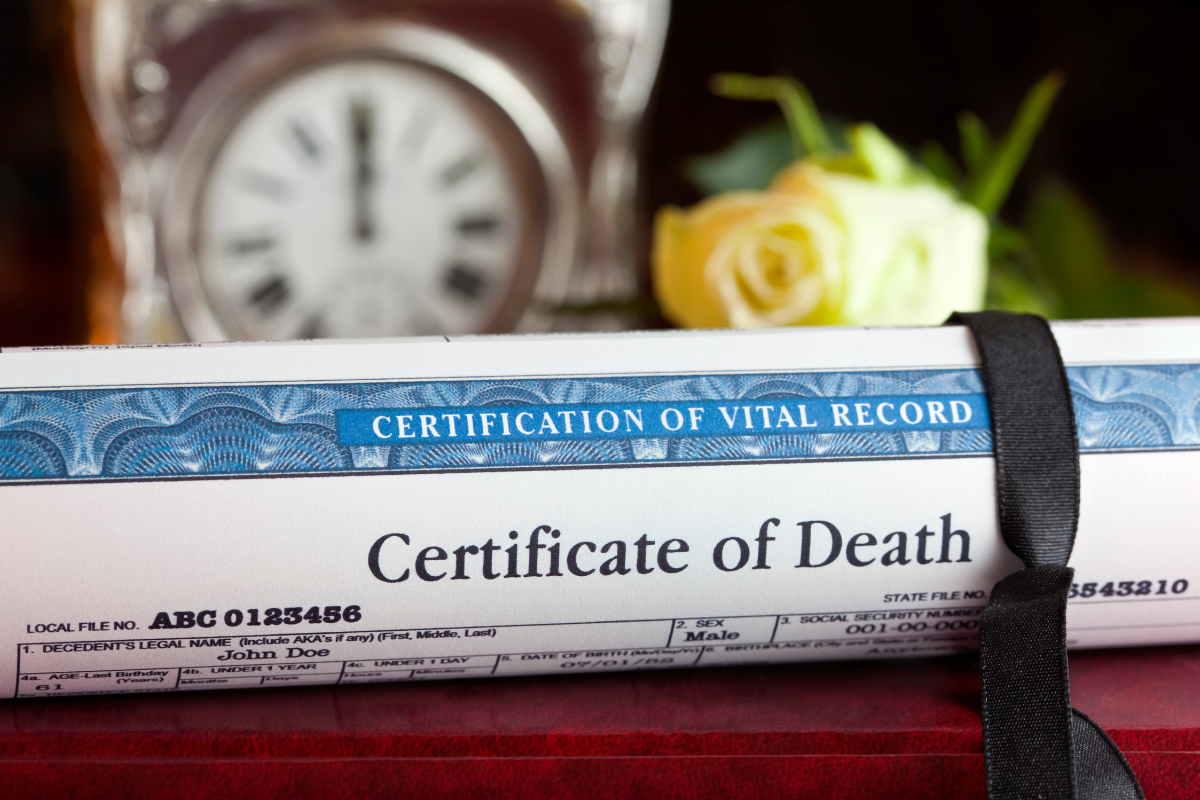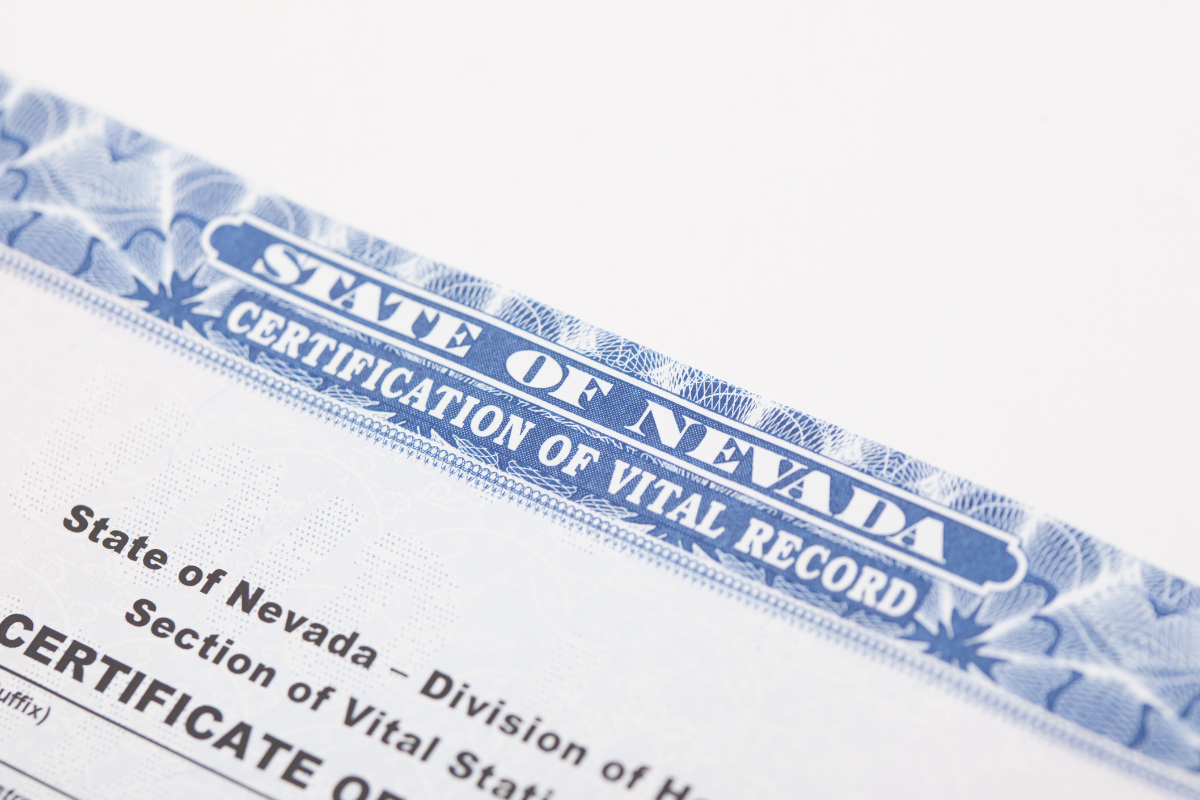Post Disclaimer: This blog reflects the author's personal experience with end-of-life matters and is provided in good faith for informational purposes only. While we aim to provide clear guidance on hard-to-find topics, this content is not legal advice and your use is at your own risk. Estate planning and end-of-life laws vary by location, so please consult your state's laws and seek guidance from a licensed attorney for your specific situation. We make no warranty about the accuracy or completeness of this information, which does not replace professional legal counsel. For more information, please see our full disclaimer.
Dealing with the loss of a loved one is never easy.
Alongside mourning, families often face logistical hurdles, including obtaining the proper documentation.
Among these documents, death certificates often lead to confusion—especially when you encounter the terms "long form" and "short form."
This article explains the key differences, uses, and steps for these death certificate types, helping you navigate the process more easily.

Types of Death Certificates: Long Form and Short Form
Death certificates are official documents issued after someone passes away.
They serve multiple purposes, such as settling financial affairs, closing accounts, or addressing legal matters.
However, not all death certificates are the same.
The long form death certificate and the short form death certificate differ mainly in the level of detail they provide.
Let’s break them down further.
What is a Long Form Death Certificate?
A long-form death certificate is often the most comprehensive version of this document.
It includes in-depth information about the deceased—often vital for legal and administrative purposes.
This type of certificate typically contains:
- Full name, date of birth, date, and place of death
- Cause and manner of death
- Social Security number
- Parental names, if required
Legal procedures such as these frequently require long-form death certificates:
- Claiming life insurance
- Transferring property titles
- Filing taxes on behalf of the deceased
For additional details, you can read more about the distinctions at Hayes Brothers Funeral FAQs.
What is a Short Form Death Certificate?
A short-form death certificate contains less detail.
It may omit sensitive information, like the cause and manner of death, while still verifying the death occurred.
The short form is often useful for less complex tasks such as:
- Closing utility accounts
- Proving someone’s passing without revealing sensitive information
- Notifications to institutions requiring minimal data
Learn more distinctions between these certificates on Collier Clerk’s Office Resources.

Key Differences Between Long Form and Short Form Death Certificates
While both documents confirm the occurrence of a death, there are significant practical and informational differences between them.
Each certificate type serves unique scenarios.
Information Included
- Long Form Death Certificate: Contains details on the cause of death, place of death, and other personal information.
- Short Form Death Certificate: Focuses mainly on the acknowledgment of death. It excludes causes and other medical information.
This distinction can influence the application of these certificates, especially in legal contexts.
Some institutions, like insurance companies, require the added detail to validate claims.
Usage Scenarios
Think about what you’re trying to achieve before applying for a death certificate:
- Long Form: You’ll likely need this for legal or financial claims, such as accessing a deceased person’s accounts or estates.
- Short Form: Often sufficient for simple account closures or as general proof of death for non-legal needs.
State Variations and Terminology
Not all states use identical terminology.
Some jurisdictions may refer to the short form as a "Memorandum of Death," or they may include different details.
Always verify your state-specific requirements by contacting your local health department or vital records office.

Obtaining a Death Certificate: Steps to Follow
Getting a death certificate isn’t as complicated as it seems, but certain documents and steps are required depending on where you live.
Here’s a guide to streamline the process.
Where to Apply
You can obtain death certificates through:
- Local health departments
- Your state’s vital records office
- Authorized third-party providers like VitalCheck
For further guidance, check Washington State Guidelines.
Required Documentation
To apply for either form of death certificate, you’ll generally need:
- A completed application form
- Proof of your relationship to the deceased
- Government-issued identification
- Payment for fees
Local offices, like those listed on Up & Doing’s Death Notification Checklist, can provide specific requirements.
Fees and Processing Times
Costs and wait times vary by state and provider:
- Fees: Ranges from $10 to $50 per certificate, depending on your location.
- Processing Times: Standard requests may take 2-4 weeks. Expedite services can deliver within days but at a higher cost.

Additional Resources and Support
Navigating this emotionally challenging period can feel overwhelming.
Connecting with the right services makes managing these processes easier.
Local Authority Contact Information
Your local vital records office or health department is the best place to start.
Up & Doing’s Immediate Death Checklist shares insights on working with local officials to get started.
Support for Grieving Families
Grief is never easy, and professional support can help.
Reach out to local support organizations, religious institutions, or online communities for guidance.
Family assistance programs can also ease the strain during this time.

Wrap-up: Long-Form and Short-Form Death Certificates
The main difference between a long-form death certificate and a short-form death certificate lies in the detail.
Once you know what each certificate contains and how it’s used, choosing the right one for your needs becomes simpler.
Remember, your state’s regulations may shape how and when you can access these documents.
For further help, browse articles like Up & Doing’s Guide on Reporting a Death to Social Security to simplify next steps.

FAQs: Long-Form and Short-Form Death Certificates
How many certified copies of a death certificate should I request?
Since this isn't covered in the article but is a common concern, families should typically request 5-10 certified copies initially.
Different institutions often require original certificates rather than photocopies, and you may need them for:
- Multiple insurance policies
- Each financial institution where the deceased held accounts
- Pension or retirement account claims
- Property deeds or vehicle titles
- Social Security and veteran's benefits
Can I obtain a death certificate for someone who died in a different state than where I currently live?
While the article mentions where to obtain certificates locally, it doesn't address out-of-state requests.
Yes, you can request a death certificate from another state, though the process may take longer.
You'll need to contact the vital records office in the state where the death occurred, and you may need to:
- Provide additional documentation proving your relationship to the deceased
- Submit notarized request forms
- Pay higher fees for out-of-state requests
- Allow for extended processing times
What happens if there are errors on a death certificate, and how can they be corrected?
The article doesn't discuss error correction, which can be a crucial issue.
Death certificate amendments are possible but require specific procedures:
- Minor corrections (like spelling errors) usually need supporting documentation showing the correct information
- Medical information changes must typically be requested by the certifying physician
- The amendment process can take several weeks to months
- Amended certificates will usually show both the original and corrected information
- Some states may charge additional fees for amendments
Check out the Up & Doing glossary page for an alphabetical listing of key terms related to estate administration, funeral planning, and other end-of-life topics.




